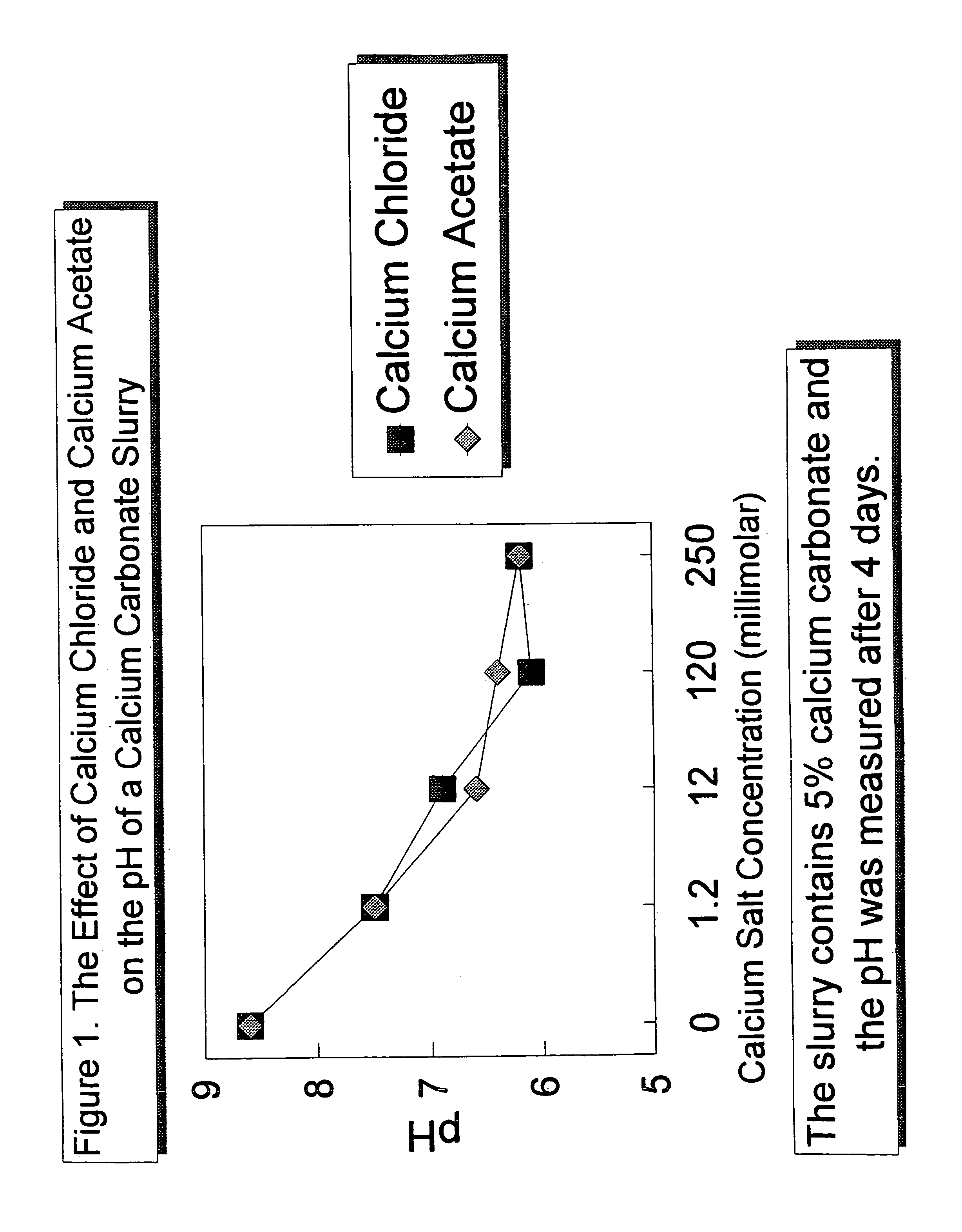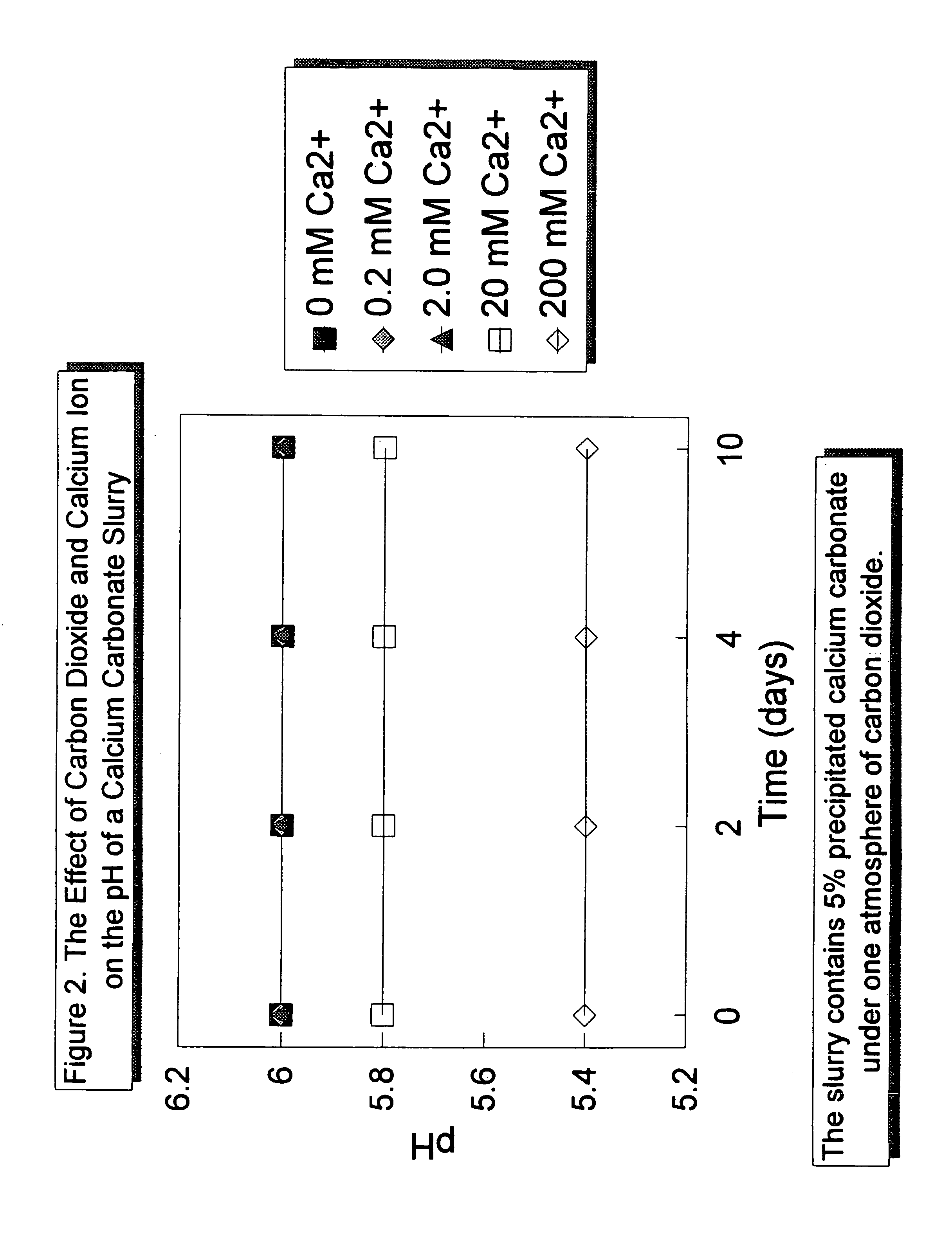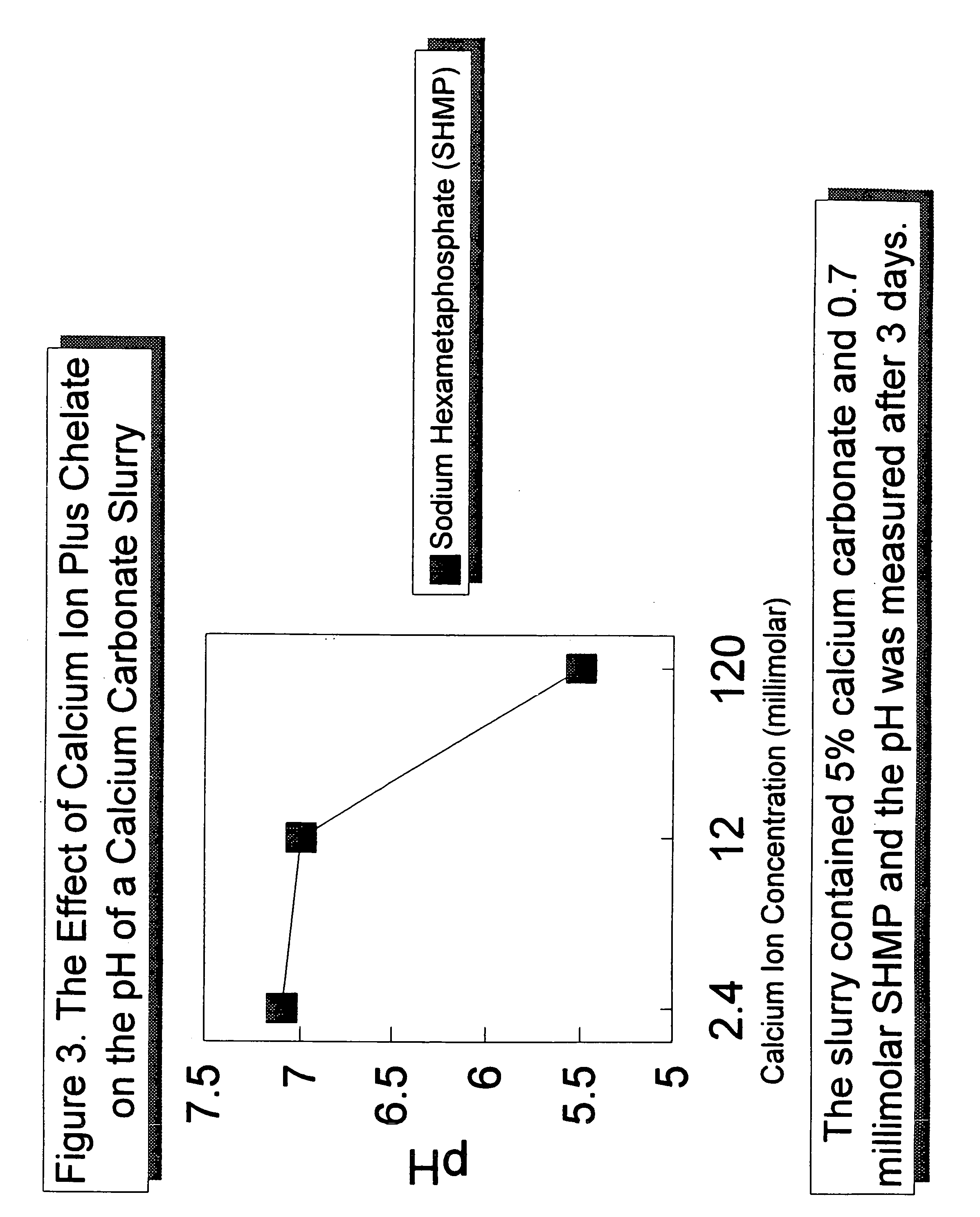Acid stabilized calcium carbonate an method of making it
a calcium carbonate and stabilized technology, applied in papermaking, non-fibrous pulp addition, coating, etc., can solve the problems of only being used as calcium carbonate filler, not being able to be used as a filler, and adding to paper cost, etc., to achieve the effect of increasing the calcium ion concentration
- Summary
- Abstract
- Description
- Claims
- Application Information
AI Technical Summary
Problems solved by technology
Method used
Image
Examples
example 1
[0040]The effect of the addition of soluble calcium chloride and calcium acetate salts to increase the calcium ion concentration, or the addition of hydrochloric acid and acetic acid to generate the respective salts in situ on the pH of a 5 percent calcium carbonate slurry is illustrated in FIG. 1. Five percent calcium carbonate slurries were prepared having calcium salt concentrations, either calcium chloride or calcium acetate, ranging from 0 to 250 millimolar. In each case, the pH was measured four days after each slurry was prepared. As can be seen in the graph in FIG. 1, an increase in the calcium salt concentration resulted in a drop in the pH of the slurry. This is typical for the addition of any water soluble calcium salt, or the addition of an acid to the slurry that will generate a water soluble calcium carbonate salt. Despite the acidic pH of the resulting slurries, the slurries were acid-stabilized, maintaining a concentration of calcium carbonate of about 5 percent with...
example 2
[0041]The effect of the addition of a weak acid and of a weak acid and calcium ion on the pH of a 5 percent calcium carbonate slurry is illustrated in FIG. 2. A 5 percent calcium carbonate slurry was prepared and placed under carbon dioxide at a pressure of one atmosphere. Under one atmosphere of CO2, the pH of the slurry could be maintained at pH 6 for at least 10 days without the addition of calcium ion and little or no decomposition of the calcium carbonate in the slurry. The addition of calcium ion, added as calcium chloride, further suppressed the pH of the slurry to 5.8 with a calcium ion concentration of 20 millimolar, and to as low as 5.4 with a calcium ion concentration of 200 millimolar. As with the pH 6 slurry, the pH of the slurries acid-stabilized with carbon dioxide and calcium ion was stable for at least 10 days.
example 3
[0042]The effect of a constant concentration of sodium hexametaphosphate chelating agent (“SHMP”) with various concentrations of calcium ion on the pH of a 5 percent calcium carbonate slurry after three days is shown in FIG. 3. Five percent calcium carbonate slurries having an SHMP concentration of 0.7 millimolar and calcium ion concentrations of 2.4, 12, and 120 millimolar, added in the form of calcium chloride, were prepared. As shown in FIG. 3, the pH of the calcium carbonate slurry decreases with increasing calcium ion concentration. However, when the chelating agent is present, the pH is lower than with calcium ion alone. For example, as shown in FIG. 1, the pH of a chelating agent free calcium carbonate slurry having a calcium ion concentration of 120 millimolar is about 6.3. The addition of a sufficient amount of calcium ion to form a slurry with a chelating agent concentration of 0.7 millimolar SHMP further lowers the pH to 5.5.
PUM
| Property | Measurement | Unit |
|---|---|---|
| particle diameter | aaaaa | aaaaa |
| pressure | aaaaa | aaaaa |
| pH | aaaaa | aaaaa |
Abstract
Description
Claims
Application Information
 Login to View More
Login to View More - R&D
- Intellectual Property
- Life Sciences
- Materials
- Tech Scout
- Unparalleled Data Quality
- Higher Quality Content
- 60% Fewer Hallucinations
Browse by: Latest US Patents, China's latest patents, Technical Efficacy Thesaurus, Application Domain, Technology Topic, Popular Technical Reports.
© 2025 PatSnap. All rights reserved.Legal|Privacy policy|Modern Slavery Act Transparency Statement|Sitemap|About US| Contact US: help@patsnap.com



